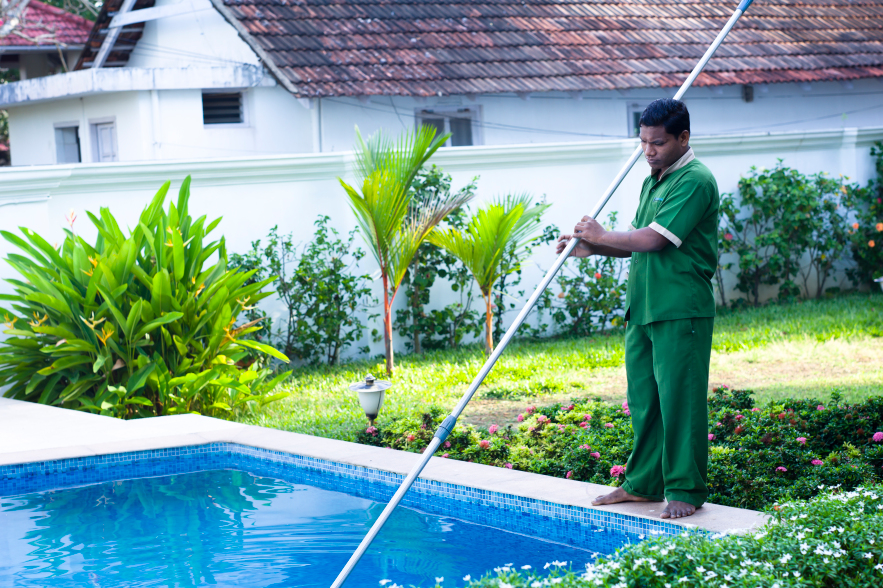
Let’s face it–the only thing essential about a swimming pool is that the water be fresh and clean. Let’s face something else, too: Achieving this can involve more chemistry than you may have seen since junior year in high school–if then. Don’t worry, though. Here are all the important concepts and terms you need to know to keep your pool clean. Just be sure to follow all manufacturer’s directions on the package of a chemical carefully.
Things You’ll Need
- PH Tester
- Broom
- Soda Ash (sodium Carbonate)
Instructions Balancing the water
- Note: The three factors mentioned here–pH, total alkalinity and calcium hardness–all affect one another, so it will take some trial and error to get all three in the proper range at once. Also note that before you add any chemical–especially an acid–to the water, you need to first turn on the pool’s filter.
- Use a water-testing kit to measure the calcium hardness (how “hard” or “soft” the water is). The proper calcium hardness is between 200 and 400 parts per million (ppm).
- Following package directions, add calcium carbonate dihydrate to raise calcium hardness; add sodium hexametaphosphate to lower it. Carefully pour the chemical mixture into the pool at various spots a foot or two (about half a meter) away from the sides of the pool.
- Measure the water’s total alkalinity. This figure should be in the range of 80 to 150 ppm; 100 to 120 ppm is best.
- Adjust the total alkalinity by adding sodium bicarbonate (baking soda) to raise it or sodium bisulfate (dry acid) to lower it.
- With a pH tester, measure the water’s pH. The proper pH for a pool is in the range of 7.2 to 7.6.
- To lower the pH, add sodium bisulfate or liquid muriatic acid. To raise it, add soda ash (sodium carbonate).
- Add more chemicals as needed until the water is in balance.
- Scoop chlorine granules into water in a nonmetal container, following package directions. Always wear goggles and rubber gloves when handling chlorine, and always put the chlorine into the water–don’t pour the water over the chlorine.
- Stir for about 30 seconds, and leave for 30 minutes to settle.
- Turn on the filter. Reaching as far into the middle of the pool as possible (perhaps by standing on a diving board), pour the chlorine into the pool. Discard any sediment left in the container.
- Add chlorine three to four times a week for a pool in heavy use.
- Occasionally–no more than once a week–you may need to superchlorinate (also called shock) the pool to burn any built-up bacteria, algae and ammonia. Following chlorine package directions, make a solution for superchlorination (it will be three to five times as strong as normal chlorine).
- Add the chlorine solution to the pool after sundown, if possible, as the sun’s rays break down chlorine.
- Before allowing anyone to go in the pool, test the residual chlorine level to make sure it has gone back down below 3.0 ppm. This will take at least several hours.
- Remove any leaves from the pool with a leaf net each time you go swimming.
- Empty and rinse off the strainer basket of the skimmer once or twice a week, and as often as daily during falling-leaf season.
- Keep the deck clean by regularly sweeping and then rinsing it with a garden hose.
- Use a cover over your pool as often as possible.
- Thoroughly clean your pool filter at least monthly. Clean a sand filter by backwashing: Reverse the flow of water through the filter for 2 to 3 minutes until the wastewater is clear.
- For a cartridge filter, remove the filter cartridge and wash it with a hose with a high-pressure nozzle. Replace the cartridge.